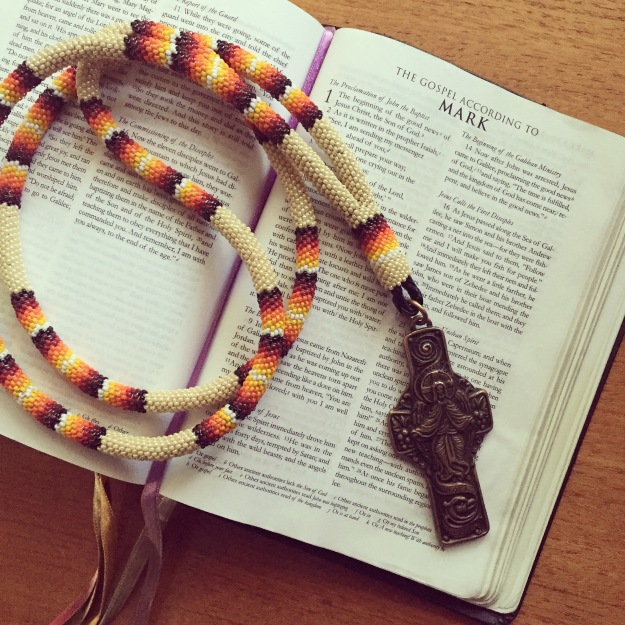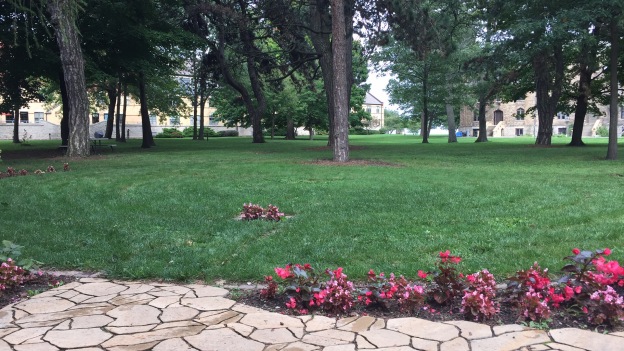If you came this way,
Taking any route, starting from anywhere,
At any time or at any season,
It would always be the same: you would have to put off
Sense and notion. You are not here to verify,
Instruct yourself, or inform curiosity
Or carry report. You are here to kneel
Where prayer has been valid. (T.S. Eliot, Four Quartets)
There is only one way into a labyrinth. It’s not a maze, but a winding path.
Earlier today at the DeKoven Center in Racine, Wisconsin — at Education for Ministry (EfM) mentor training — we watched a video called With One Voice.
Contemporary mystics from 14 spiritual traditions, monastics and lay people, men and women, spoke of the universal human experience that mystics have, even though they seem to pursue many different paths toward (or following) that experience.
One of the mystics who spoke, Sadhguru Jaggi Vasudev of the Isha Yoga Center, suggested paradoxically that “there is only one path. That path is you.”
In just the same way, there is only one path into the labyrinth, and you must take the winding road toward the center.

As you approach the center, you come very close, but then the winding path leads you farther away, back around for another loop.
Similarly, as you leave the labyrinth, retracing your steps along the one path, you seem to get quite far along, and then you suddenly find yourself near the center again.
There’s a quality like breathing to a labyrinth — the rhythm of going in and back out, out and back in again.

As I approach ordination to the priesthood, I have been walking for the past few months in company with members of my discernment group (a priest, a deacon, and two lay people).
I am feeling the same sort of in-and-out, near-and-then-far sensation as in the labyrinth.
Some days, the prospect of beginning a new pastoral ministry seems crystal clear and tantalizingly close (what are we waiting for?), then a question from the group causes me to wonder if I’m really as ready as I think I am.
Other days, it feels like Jesus might have felt at the beginning of Mark’s gospel: “The Spirit immediately drove him out into the wilderness ….” I’ve had a chance to meet many members of the new congregation, and it feels in some ways like we’ve already started. But the ordination date hasn’t even been set.
Back to the center. Loop back around.
Perhaps I should “put off sense and notion,” as Eliot suggests. I’m not here to “verify,” to nail things down, to organize the whole project. Other people, like my bishop, are in charge of that.
Perhaps all I need to do right now is kneel right here, where prayer has been valid. I know from experience that the DeKoven Center is just such a place.
There is only one path, and it will wind wherever it leads, to the center and back again, as long as it takes.





